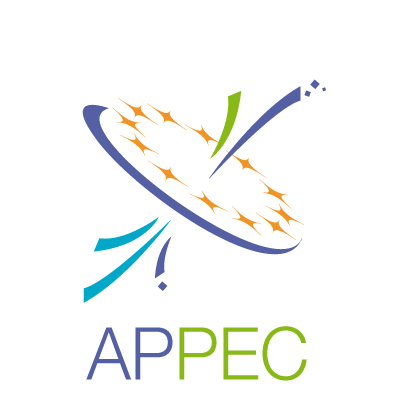General background
In the recent years, astroparticle physics, born at the turn of the pervious century, marking the intersection of astrophysics, particle physics and cosmology has began has to splendidly fulfill its theoretical and experimental goals.
Astronomies using new cosmic messengers were born: high energy photons, first low energy but also recently high energy neutrino photons, while the detection of gravitational waves is within the sensitivities of the present generation of gravitational antennas. The charged cosmic ray spectrum was studied with unprecedented precision in space and on ground revealing new features but also many puzzles for events and fields in our galaxy and beyond.
In parallel, the Planck satellite and its predecessors starting with COBE measured with the ultimate precision the primordial cosmological microwave background (CMB) fluctuations of temperature, setting precise constraints in our model of the Universe, a model in which the precision of knowledge of the percentage of its constituents, achieved in the recent years, matches our ignorance of their nature: the nature of the force accelerating it called dark energy or the nature of the dominant dark matter discovered through its gravitational effects.
The study of cosmic neutrinos also revealed that neutrinos have a mass, a discovery confirmed with man-made accelerator and reactor experiments, having fundamental consequences for the role of these particles in cosmic evolution while at the same time revealing a pathway beyond the standard model of particle physics.
This extraordinary range of discoveries was accompanied by a series of Nobel prizes during this century: low energy cosmic neutrinos from Sun and Supernova, CMB fluctuations, dark energy till the 2015 Nobel prize of T. Kajita and Art McDonald in 2015 for the discoveries of neutrino oscillations leading to the neutrino mass parameters.
This path was accompanied, since 2001, in Europe by the Astroparticle Physics European Consortium (APPEC) and the EU Eranet ASPERA. APPEC/ASPERA issued a programmatic scientific vision of the field in 2008 (http) and a priority roadmap in 2011 (http) setting up priorities for infrastructures that are since in the process of realization, operation and discovery. This process had a global impact well beyond Europe, since APPEC members were a the origin of the astroparticle working group in the context of OECD which prepared a worldwide scientific vision (http) and seeded the AstroParticle Physics International Forum (APIF) a worldwide group of agency officials and AstroParticle Physics Interational Committee (APPIC) a scientific advisory group of IUPAP. Last but not least APPEC plays a leading role in the efforts of globalization in the neutrino and cosmological microwave background sectors.
The task is not finished though, the new discoveries, have set new riddles and opportunities for their resolution, to state but a few: the astroparticle physics observatories have reached sensitivities where a “multi-messenger” study of cosmic phenomena is possible, the future measurement the polarization of the CMB fluctuations or the lensing of the primordial light, associated with the large surveys of dark matter can map and correlate the early and more recent Universe, putting constraints in the number and nature of particles circulating in it, (e.g. neutrinos) which associated with the neutrino studies on earth could open a portal beyond the standard models of both Particle Physics and Cosmology or dark matter will be explored through direct and indirect means ,with very high sensitivities in a complementary way to the same searches in LHC.
